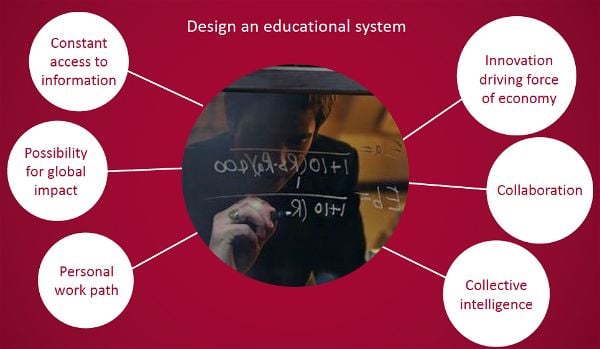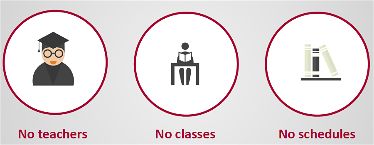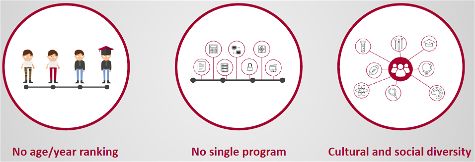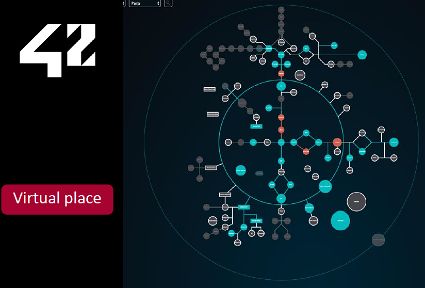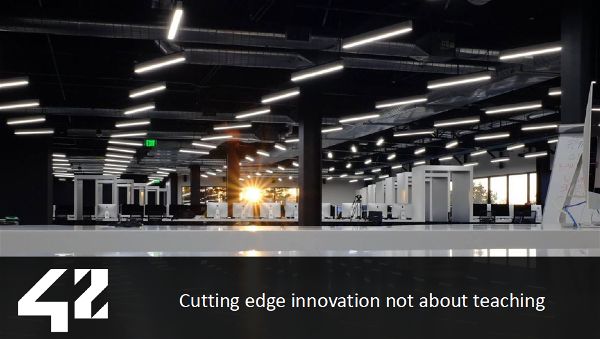42: The Answer to Our Changing Educational Needs by Yuliya K. '18
a school with no teachers, no schedules, and no rankings
Note: xTalks: Digital Discourses is a seminar series from the MIT Office of Digital Learning designed to facilitate awareness, deep understanding, and transference of educational innovations at MIT and elsewhere. Last week, I attended a fascinating xTalk by Lou Guenier, Pedagogical Director at the 42 Silicon Valley engineering college. This blog post is a summary of the event.
____________________________________
At 12 years old, Lou Guenier left the French public education system. His travels led him to a remote Buddhist monastery in the Himalayas. In a place without electricity or Internet access, Lou realized the amazing possibilities of modern technology to transmit knowledge across the world. While at the monastery, he built a renewable energy device and an online platform for the monks to study and spread their ideas across the world.
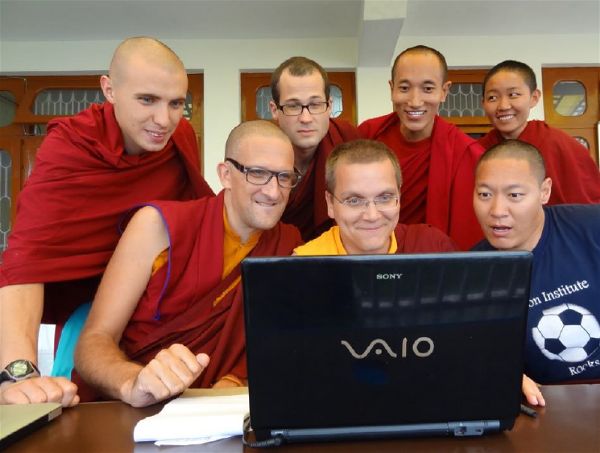
According to Lou, every person today has potentially more impact on society than the President of the United States had twenty years ago. We live in a connected global environment, and with such immense power an important question arises: Is every person ready to have such an influence? Or is utilizing the power of the internet more like giving nuclear codes to children? Lou is now channeling his passion in technology to design a new educational system that gives students mastery of essential modern tools. He is leading the educational revolution.
There are good reasons for the old system to be overhauled. Traditional educational systems provide little access to information, have limited global impact, promote repetitive work, and reward only productivity. This system is driven mostly by competition, and collaboration is often deemed to be cheating. All of these aspects date back to Italy in the 11th century. Amazingly, the educational model hasn’t changed much since then.
Lou proposes a new system that takes advantage of modern technology, a system that provides constant access to information, makes global impact possible, allows for a personalized work path, and promotes innovation, collaboration, and collective intelligence. It questions the old approach: Why should we limit the technology-learner relationship? Why pretend there is only one solution to each problem? Why let others decide what questions we ask ourselves? Why learn skills we used to 50 years ago and, moreover, continue to learn the same skills as our neighbors and pretend to be the same?
In order to solve complex global crises, we need to answer those questions and shift our thinking about the educational system. We need to become conscious of our environment and potential impact on the world. One way to promote this sort of learning is through École 42, an engineering university with no teachers, class years nor rankings, and no set program for students to follow.
42 is a physical space, but students do not have assigned seats and are encouraged to move between computers to work with different people. The space is open at all times so students can come in after their full-time commitments. 42 is a also a virtual place, with online gamified projects and personalized project maps. After taking base courses, students at 42 can branch out to learn what they need to succeed. To achieve their dreams, they can stay at school for as long as they want. The fastest student graduated in a year, while others keep coming back even after graduating, as new courses are added regularly.
The most important piece of a 42 education is peer-to-peer interaction. Students must complete both individual projects with peer input and group projects. For the latter, team members all get the same grade, assigned by out-of-group peers, that reflects the abilities of the lowest-performing team member. This encourages everyone on the team to be knowledgeable about every aspect of the project.
Together with their peers, students learn to diversify their sources of knowledge, process and filter enormous amounts of information and, by doing so, acquire critical thinking skills. Each person must find their own solution and forge their own learning path. And if they want to learn something outside of the existing 42 curriculum, they always have a say on what courses should be added.
As the director of pedagogy in a school with no teachers, Lou’s job is to make new challenges available for students and push their boundaries of knowledge. His colleagues make it clear that 42 is about cutting-edge innovation rather than teaching. And that is why, even though tuition is free, the school is not made for everyone. In order to be accepted, students have to go through four weeks of problem-solving “boot camp,” with new challenges to resolve every day. If you can get through the four weeks in the “swimming pool” and not “sink,” you can become a part of something great. The kinds of students who succeed continue to push themselves throughout their time at 42. A popular challenge at the school is working for 48 hours straight on the campus computers.
With such impressive perseverance, alumni can advance from having no software experience to employment in corporations like Uber and Amazon, as well as creation of their own start-ups. They do this without relying on the reputation of 42, which is not yet famous. Alumni have to build their own credibility. And this is definitely possible: 42 graduates are well-equipped for the workforce. They know how to collaborate and defend their projects. They are passionate about their work. And they know how to thrive in an environment that pushes for constant innovation.
Lou’s passion is contagious, and his vision truly makes sense in our rapidly changing environment. According to him, “We are going through an educational revolution.” Lou wants to be a part of it as much as possible. So should we.
Read posts about earlier Office of Digital Learning events here, here, here, and here. Check out the ODL blog here. And learn more about 42 here and here.
